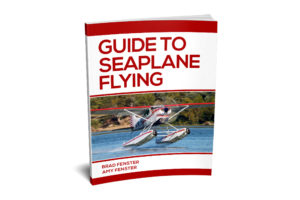Introduction
Out of all the ratings available to the airplane pilot, the seaplane rating is arguably the most fun to get. Landplanes tend to be restricted to using prepared airports and runways. A seaplane allows the pilot to explore anywhere from a sandy Caribbean beach to the Alaskan back country. Seaplane flying never gets boring—the water is never exactly the same. Changes in wind speed and direction, lighting conditions, and boat traffic will ensure that each takeoff and landing is unique. This guide is intended to help the landplane pilot learn the skills needed to become a safe and competent seaplane pilot.
This guide assumes that training will be conducted in the U.S. using a single engine float plane. As such, only U.S. regulations will be mentioned. The descriptions of some aerodynamic phenomenon relate to a clockwise rotating propeller. If operating an aircraft with different engine, such as a Russian radial, some aspects will be reversed. A seaplane can be a float equipped airplane or a flying boat. Throughout this guide, “seaplane” will refer to a float equipped aircraft. Although many concepts are similar, flying boats have unique characteristics and the prospective pilot of a flying boat should receive training specific to the type. This guide assumes that the reader has at least a private pilot single engine land rating, so the basics of flight are not discussed. Although someone could obtain their initial rating in a seaplane, that practice is not common. Lastly, this guide does not address seaplane flying in ocean or other large open water areas, as these are not likely encountered for a new seaplane pilot.
Next Section – Characteristics of Seaplanes

